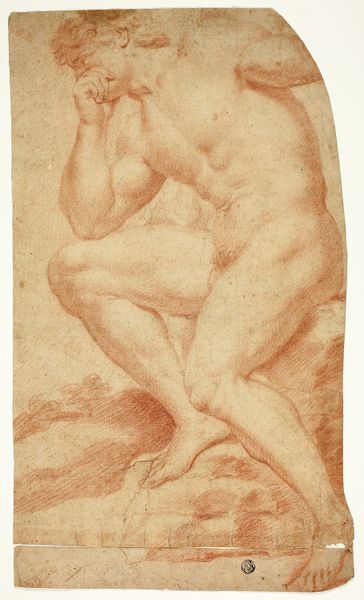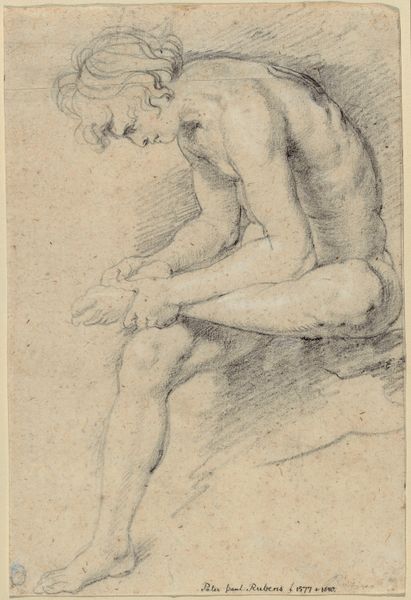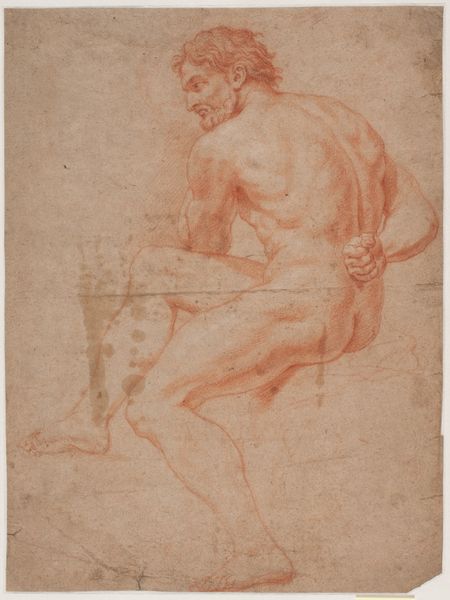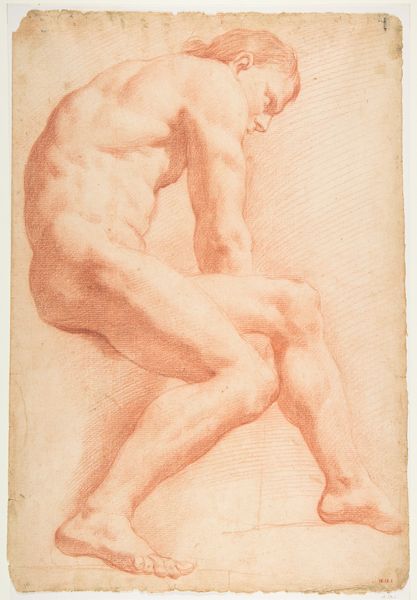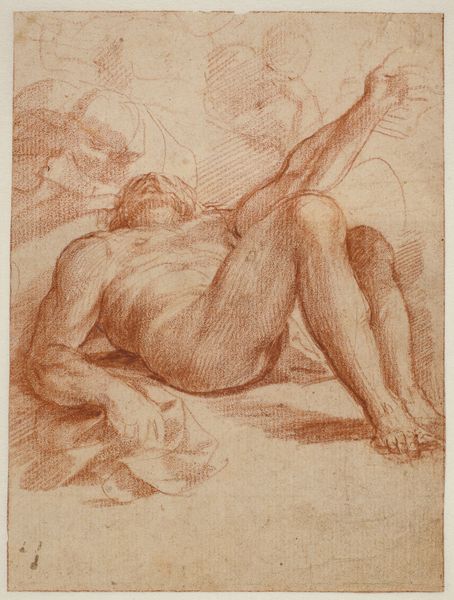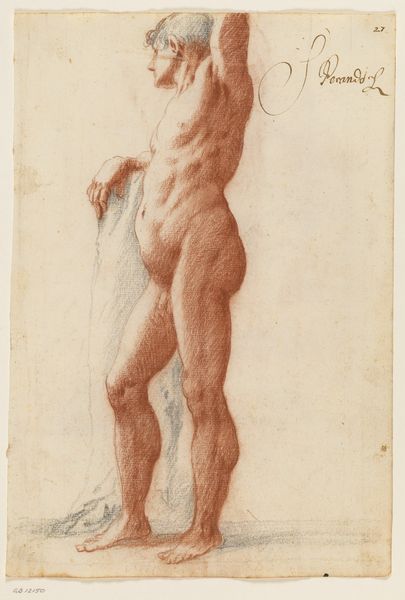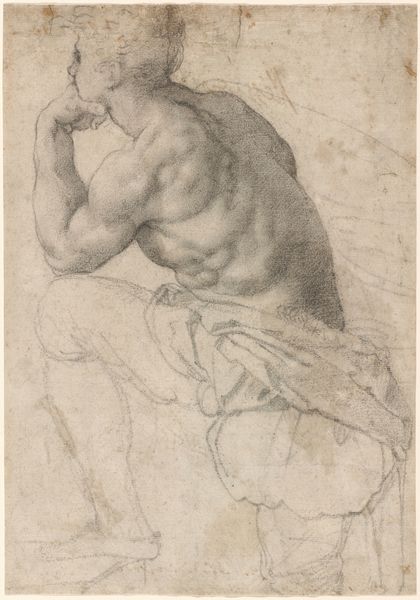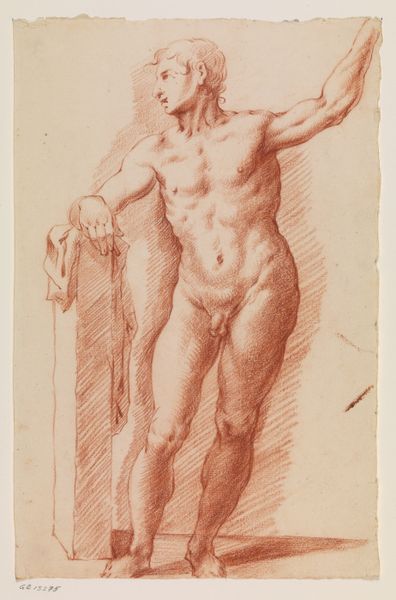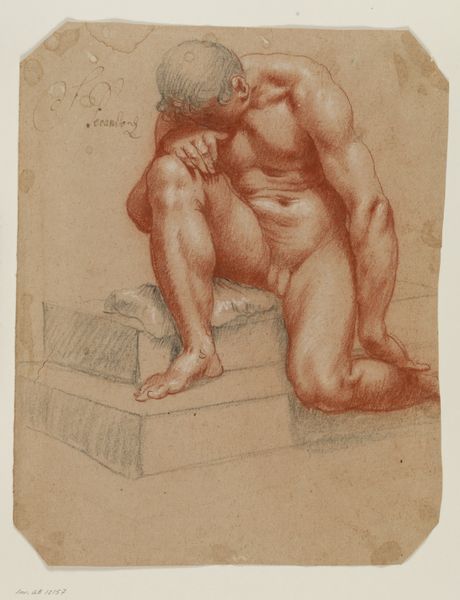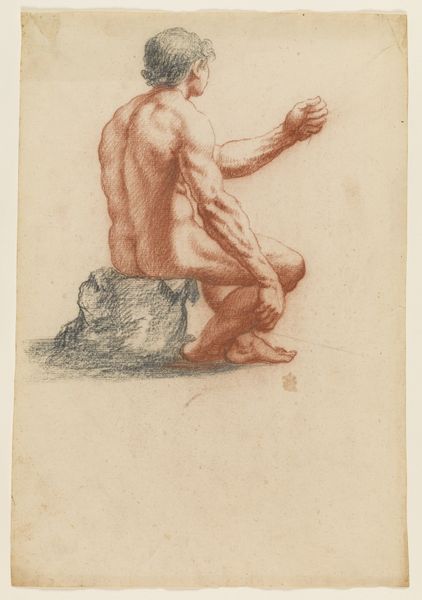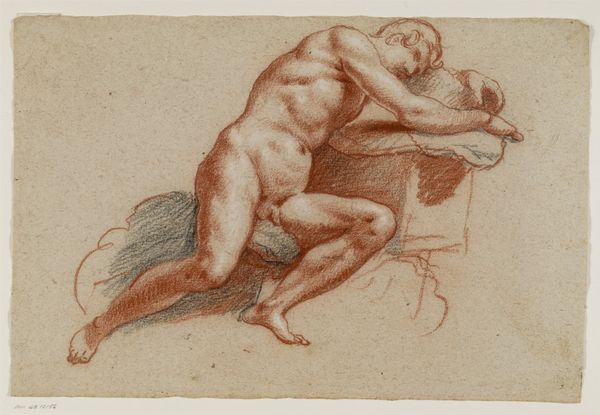
drawing, dry-media
#
drawing
#
figuration
#
11_renaissance
#
dry-media
#
nude
Dimensions: 313 mm (height) x 213 mm (width) (bladmaal)
Curator: Before us is a red chalk drawing from between 1600 and 1624, housed here at the SMK. It is an intriguing, yet unsigned, study of a "Seated Male Nude Turning His Head to the Left." Editor: There's an undeniable tension in the figure’s posture. It’s very engaging; his gaze and the extended hand creates an almost confrontational dynamic. Curator: Absolutely. Consider how the artist has employed the red chalk, particularly its granular quality. See how the strokes coalesce to build volume and mass. Semiotically, this emphasizes a physical, earthly presence. Editor: And the artist, with the red chalk, must have been attuned to the performative aspects of mark-making itself. Chalk is a humble material—think of the labor involved in its very creation, or that of preparing the paper. There is no highfalutin oil paint here. Curator: Precisely. And think about the deliberate contrapposto. The subtle twist in the torso leads the eye, creating a spatial dynamism. It allows the artist to showcase their understanding of human anatomy through form. The shadowing delineates structure and, through it, an intellectual sophistication is communicated. Editor: What about the almost rushed, unfinished quality? Doesn't it hint at a workshop environment, of practical training? The labor in the drawing is there, yet the intention might be less about an individualized 'artistic' statement and more about craft within a system. Curator: I concede that there is a certain unpolished quality, but consider this from the point of view of expressive figuration, the way that the incompleteness and open-ended quality of a drawing creates potential. We might appreciate this figure not just as an idealized form, but as something altogether more personal and engaging, an embodiment of nascent possibility. Editor: Ultimately, engaging with a drawing like this makes us ask more questions about the who and how rather than simply celebrating artistic vision. We ponder who made the paper, what conditions allowed access to models, and that’s crucial to decoding value in artworks from this time. Curator: Indeed, these Renaissance drawings remain charged with interpretative potential. The ongoing process of inquiry allows us to encounter and re-encounter not only works of art, but also modes of thinking and perception.
Comments
No comments
Be the first to comment and join the conversation on the ultimate creative platform.

